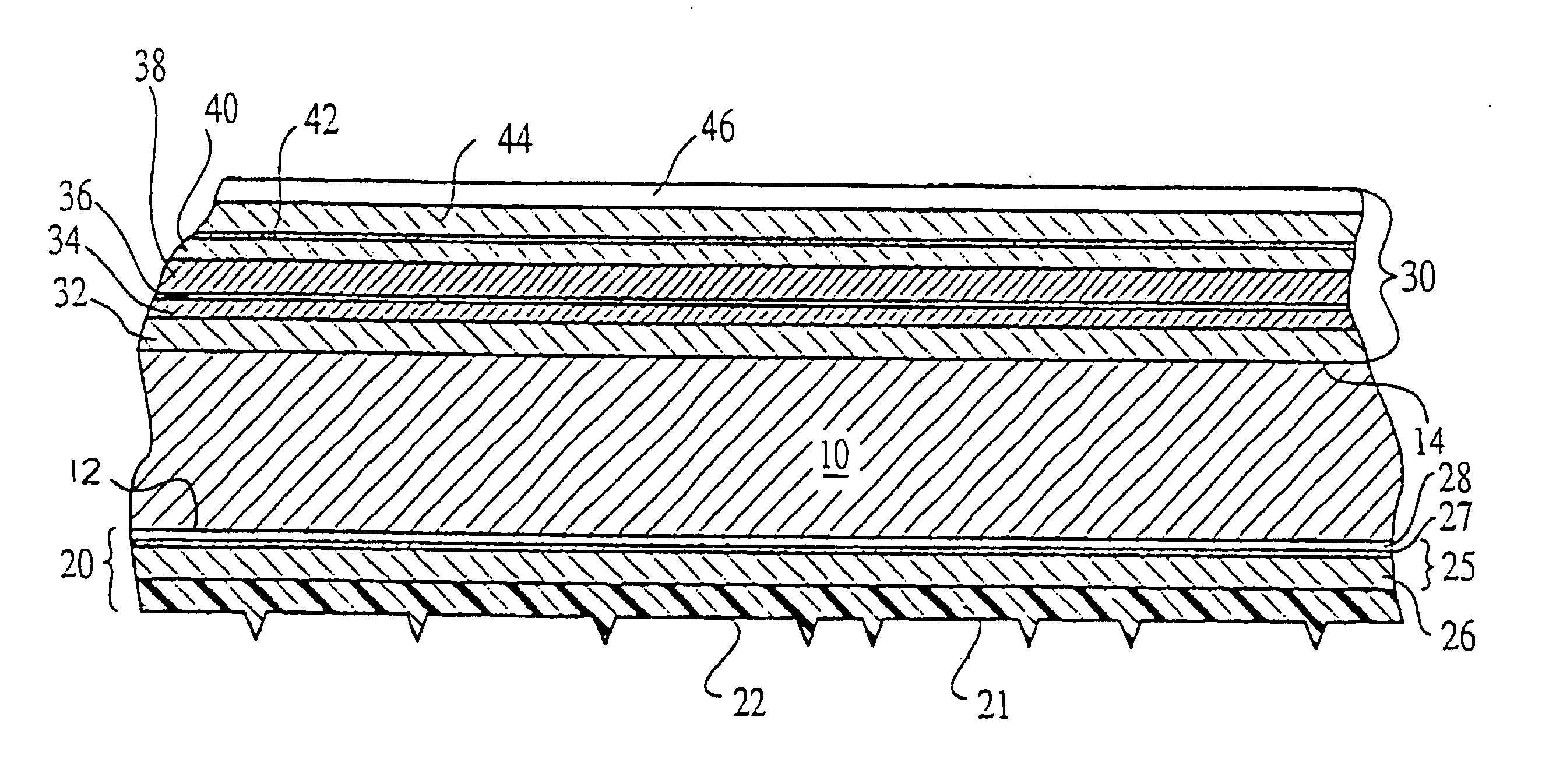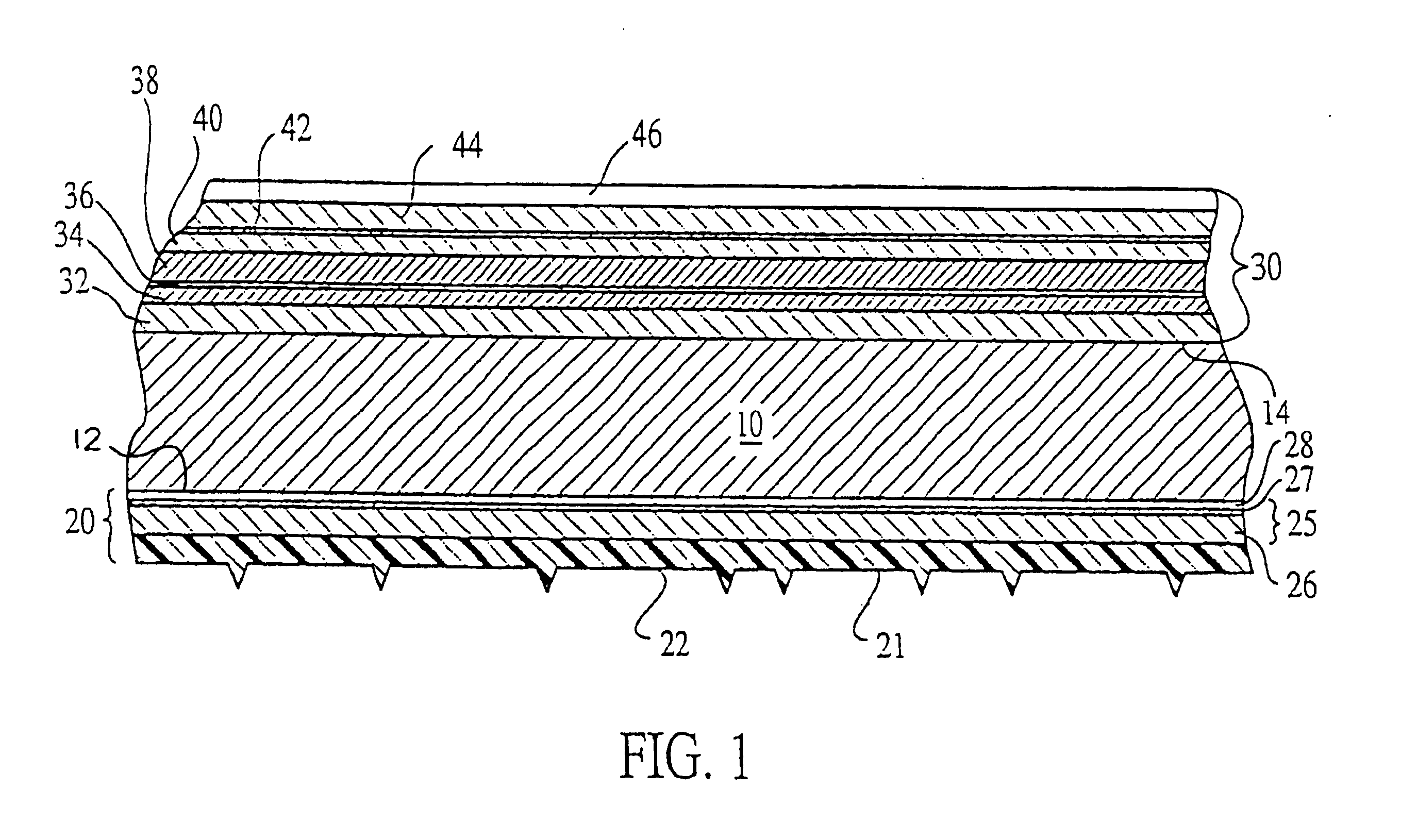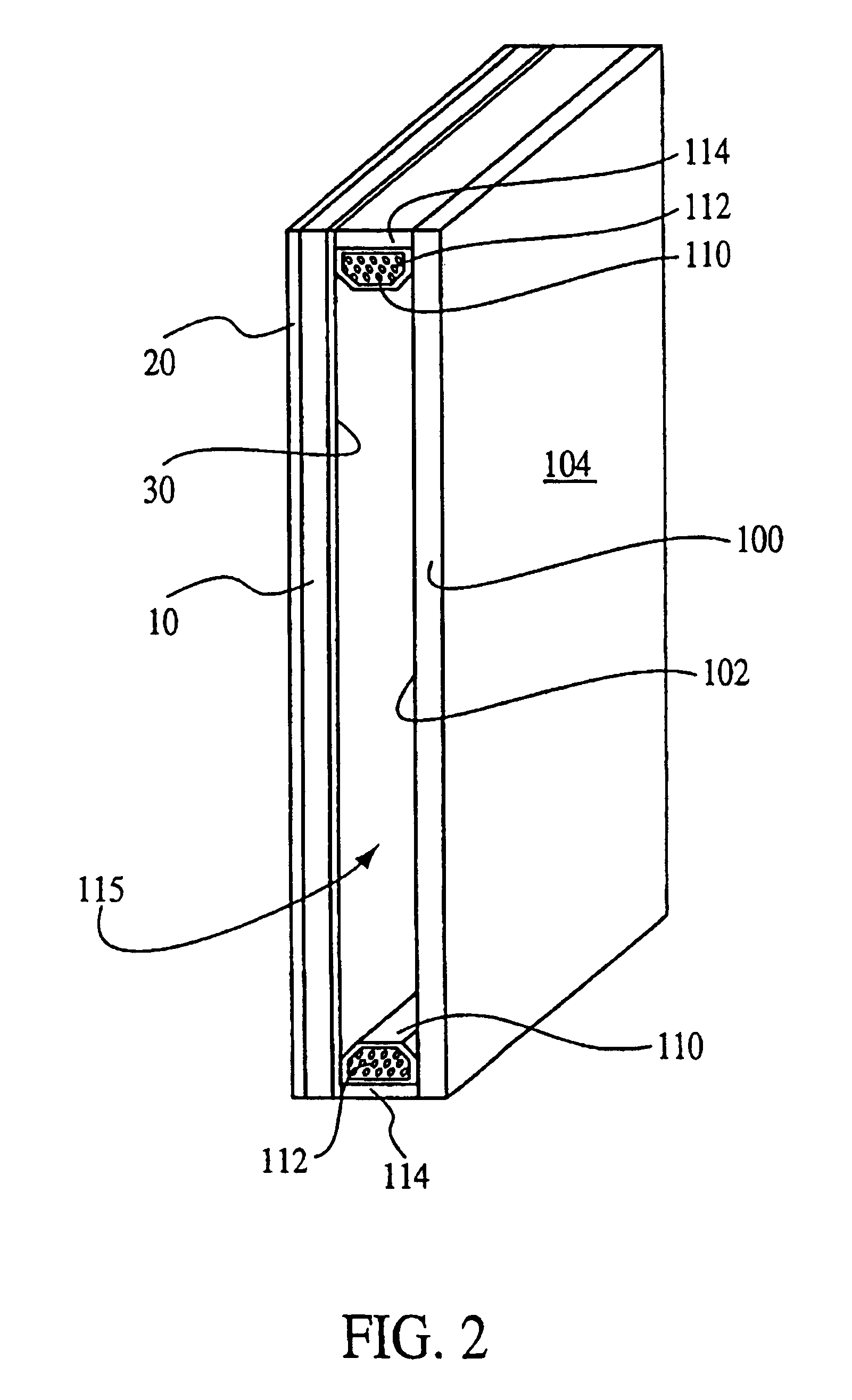Low-emissivity, soil-resistant coating for glass surfaces
a technology of glass surface and low emissivity, applied in the direction of natural mineral layered products, instruments, transportation and packaging, etc., can solve the problems of a large number of windows being cleaned, a large amount of time and expense, and a large amount of windows being cleaned
- Summary
- Abstract
- Description
- Claims
- Application Information
AI Technical Summary
Benefits of technology
Problems solved by technology
Method used
Image
Examples
Embodiment Construction
[0026]FIG. 1 schematically illustrates a sheet of glass bearing a pair of coatings in accordance with one useful embodiment of the invention. The sheet of glass 10 includes an exterior face 12 and an interior face 14. (The designation of “interior” and “exterior” face in the ensuing discussion is somewhat arbitrary. It is assumed, though, that in most circumstances the exterior face will be exposed to an ambient environment wherein it may come into contact with dirt, water and the like. The interior face may also be oriented toward the same kind of ambient environment. In the embodiments illustrated in FIGS. 2 and 3, though, this “interior” face is actually protected and a second pane of glass stands between this interior face and the ambient environment.)
[0027]Glass substrates 10 suitable for use in connection with the present invention include any of the conventional glass substrates known in the art for the preparation of coated glass articles. A typical glass substrate used in t...
PUM
| Property | Measurement | Unit |
|---|---|---|
| contact angle | aaaaa | aaaaa |
| temperature | aaaaa | aaaaa |
| transmittance | aaaaa | aaaaa |
Abstract
Description
Claims
Application Information
 Login to View More
Login to View More - R&D
- Intellectual Property
- Life Sciences
- Materials
- Tech Scout
- Unparalleled Data Quality
- Higher Quality Content
- 60% Fewer Hallucinations
Browse by: Latest US Patents, China's latest patents, Technical Efficacy Thesaurus, Application Domain, Technology Topic, Popular Technical Reports.
© 2025 PatSnap. All rights reserved.Legal|Privacy policy|Modern Slavery Act Transparency Statement|Sitemap|About US| Contact US: help@patsnap.com



